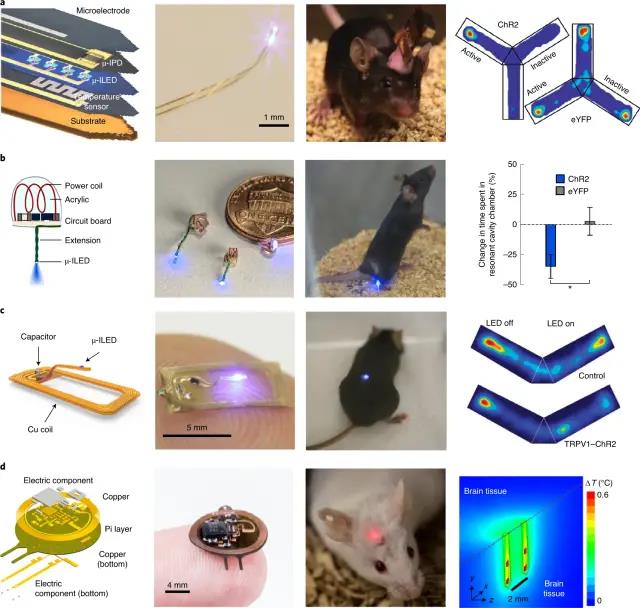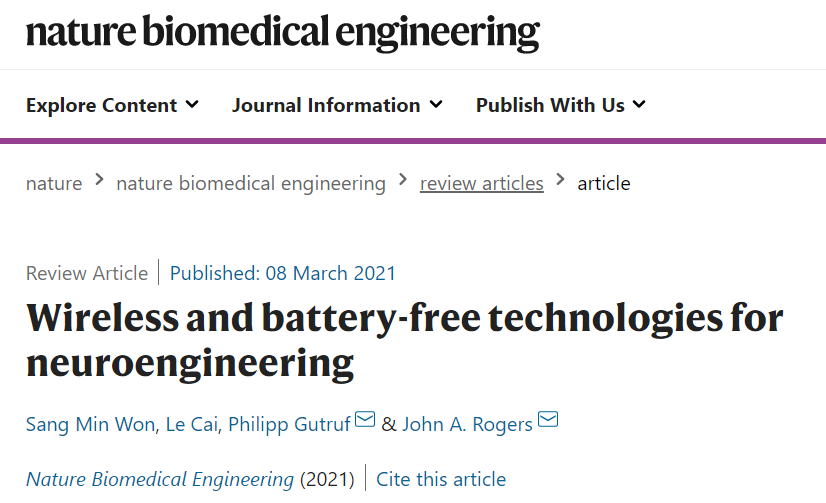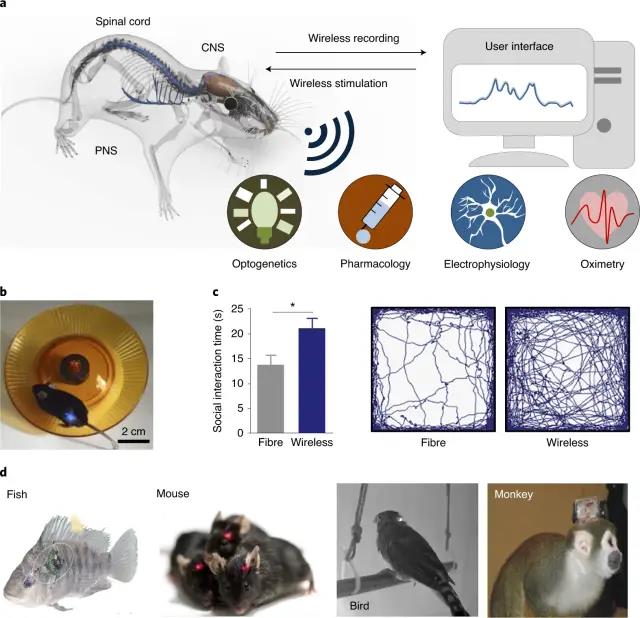A review of the latest Nature Biomedical Engineering by John A. Rogers and others
QQ Academic Group: 1092348845
Detailed
The progress of electronic, photoelectric, and microfluidic technology interface with living biological systems has laid the foundation for multifunctional devices that can interrogate and regulate the behavior of central and peripheral nervous systems. In addition to its application in basic research, neural tissue interfaces have also been developed to treat neurological diseases. Tethered and battery-powered devices connected to nerve tissue can limit natural movement and prevent social interaction in animal models, thereby limiting the application of these devices in behavioral neuroscience research.
In view of this, academician John A. Rogers of Northwestern University and Philipp Gutruf of the University of Arizona published a review in Nature Biomedical Engineering, discussing the latest developments in miniaturized and ultra-lightweight devices as neural engineering platforms. These devices are wireless, Battery-free and fully implantable, with the ability to match or surpass wired or battery-powered alternative products.
Picture map|Implantable wireless electronic device
The researchers outlined the latest technologies in such wireless implantable devices and compared their design and function with those of tether and battery-powered systems. The material selection and engineering methods for developing functional interfaces in the context of biocompatibility and airtightness, wireless data communication and wireless power transmission are also discussed. Although researchers emphasize the use of these technologies for basic neuroscience research and multifunctional neuroengineering in small animals, these same platforms also establish strategies and methods for devices that can be used in large animals and humans.

Figure | Strategies for powering wireless and battery-free implantable devices
In addition, such advanced neural interfaces with optical, electrical or fluid functions can also combine recording and stimulation modes for closed-loop applications in basic research or actual treatment of abnormal physiological processes.

Figure | Optogenetics interface, used to regulate cell viability

Figure | Fully implantable, wireless and battery-free system for automatic closed-loop peripheral nerve regulation
references:
Won, S.M., Cai, L., Gutruf, P. et al. Wireless and battery-free technologies for neuroengineering. Nat Biomed Eng (2021).
https://doi.org/10.1038/s41551-021-00683-3
In view of this, academician John A. Rogers of Northwestern University and Philipp Gutruf of the University of Arizona published a review in Nature Biomedical Engineering, discussing the latest developments in miniaturized and ultra-lightweight devices as neural engineering platforms. These devices are wireless, Battery-free and fully implantable, with the ability to match or surpass wired or battery-powered alternative products.


Picture map|Implantable wireless electronic device
The researchers outlined the latest technologies in such wireless implantable devices and compared their design and function with those of tether and battery-powered systems. The material selection and engineering methods for developing functional interfaces in the context of biocompatibility and airtightness, wireless data communication and wireless power transmission are also discussed. Although researchers emphasize the use of these technologies for basic neuroscience research and multifunctional neuroengineering in small animals, these same platforms also establish strategies and methods for devices that can be used in large animals and humans.

Figure | Strategies for powering wireless and battery-free implantable devices
In addition, such advanced neural interfaces with optical, electrical or fluid functions can also combine recording and stimulation modes for closed-loop applications in basic research or actual treatment of abnormal physiological processes.

Figure | Optogenetics interface, used to regulate cell viability

Figure | Fully implantable, wireless and battery-free system for automatic closed-loop peripheral nerve regulation
references:
Won, S.M., Cai, L., Gutruf, P. et al. Wireless and battery-free technologies for neuroengineering. Nat Biomed Eng (2021).
https://doi.org/10.1038/s41551-021-00683-3
- Previous: GOD Keratin Hydrogel f
- Next: A Rising 2D Star: Nove


 Academic Frontier
Academic Frontier